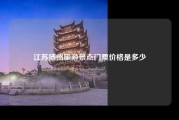景点门票 英文
原创Tourism Attractions' Ticket Pricing Strategy
In today's era where travel is increasingly popular, whether domestically or internationally, people often find themselves struggling with questions like: What are the ticket prices at these famous tourist attractions? Behind those fees lie intricate commercial logic.
I. Market Research and Pricing Strategies
We must understand that the pricing of attraction tickets involves multiple factors, including market research which is crucial for analyzing the needs and preferences of potential tourists. Popular destinations such as historical sites and natural wonders might attract large numbers of visitors, thus leading to higher ticket prices.
Operational costs play an essential role in determining ticket prices. From infrastructure construction to maintenance services, every aspect requires financial investment. If a destination can leverage increased revenue from higher ticket prices to cover these costs, then implementing a reasonable price strategy becomes critical.
Competition among other well-known tourist spots shouldn't be overlooked. Many places offer their lowest-priced entry for attracting more visitors, creating a competitive landscape. In this scenario, tourism operators need to balance profitability while also standing out in competition through flexible price adjustments tailored to their unique positioning.
II. Differentiated Pricing Strategies
To combat competition, some tourist attractions now adopt differentiated pricing strategies, offering varying ticket options based on customer segments. For example, student discounts, senior citizen tickets, or special festival rates cater to diverse consumer tastes. By doing so, they not only meet different spending levels but also enhance the attractiveness of their offerings.
Many cities have specific discount programs for school groups or free entrance days during cultural festivals. This flexibility makes it easier for many people to experience high-quality tourism products without missing out.
III. Data-Driven and Intelligent Pricing
As technology advances, data-driven intelligent pricing has become prevalent. By collecting and analyzing extensive visitor data (such as travel time, age, gender), touristic attractions can predict demand accurately and adjust ticket prices accordingly. This method not only saves administrative expenses but also optimizes resource utilization effectively.
Some online travel platforms use big data techniques to optimize product recommendations and service improvements. By real-time analysis of user booking behaviors and preferences, personalized price suggestions are offered to users. This enhances user experience and indirectly influences overall revenue structures.
IV. Sustainable Development and Social Responsibility
Beyond economic considerations, more and more tourist attractions are focusing on environmental sustainability and social responsibility. They set up environmental funds to protect local ecosystems; launch "green tours" to encourage participation in eco-friendly activities; and implement policies that reward visitors who contribute positively towards conservation efforts.
These initiatives promote sustainable tourism practices and contribute to building positive reputations within the industry, thereby enhancing trust and loyalty among customers.
Tourist attraction ticket prices are complex and ever-changing, involving various aspects such as market dynamics, operational cost control, strategic business decisions, and sustainable development goals. As we face a dynamic environment and evolving consumer demands, tour operators should innovate thinking and apply various pricing strategies flexibly. Only by standing strong in this challenging sector can we maintain our success.
We hope this article helps readers better comprehend the commercial logic behind tourism attraction ticket prices and spark their desire for exploration and discovery in travel experiences.
版权声明
本文仅代表作者观点,不代表去旅游立场。
本文系作者授权去旅游发表,未经许可,不得转载。
 去旅游
去旅游



